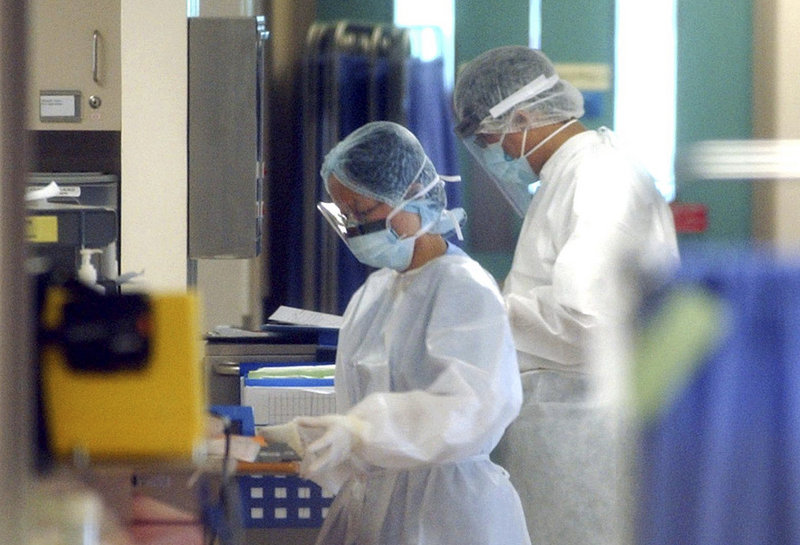LONDON – A mysterious new respiratory virus that originated in the Middle East spreads easily between people and appears more deadly than SARS, doctors reported Wednesday after investigating the biggest outbreak in Saudi Arabia.
More than 60 cases of what is now called MERS, including 38 deaths, have been recorded by the World Health Organization in the past year, mostly in Saudi Arabia. So far, illnesses haven’t spread as quickly as SARS did in 2003, ultimately triggering a global outbreak that killed about 800 people.
An international team of doctors who investigated nearly two dozen cases in eastern Saudi Arabia found the new coronavirus has some striking similarities to SARS. Unlike SARS, though, scientists remain baffled as to the source of MERS.
In a worrying finding, the team said MERS (Middle East respiratory syndrome) not only spreads easily between people, but within hospitals. That was also the case with SARS, a distant relative of the new virus.
“To me, this felt a lot like SARS did,” said Dr. Trish Perl, a senior hospital epidemiologist at Johns Hopkins Medicine, who was part of the team. Their report was published online Wednesday in the New England Journal of Medicine.
Perl said they couldn’t nail down how it was spread in every case – through droplets from sneezing or coughing, or a more indirect route. Some of the hospital patients weren’t close to the infected person, but somehow picked up the virus.
“In the right circumstances, the spread could be explosive,” said Perl.
Cases have continued to trickle in, and there appears to be an ongoing outbreak in Saudi Arabia. MERS cases have also been reported in Jordan, Qatar, the United Arab Emirates, Britain, France, Germany, Italy and Tunisia. Most have had a direct connection to the Middle East region.
In the Saudi cluster that was investigated, certain patients infected many more people than would be expected, Perl said. One patient who was receiving dialysis treatment spread MERS to seven others, including fellow dialysis patients at the same hospital. During SARS, such patients were known as “superspreaders” and effectively seeded outbreaks in numerous countries.
Perl and colleagues also concluded that symptoms of both diseases are similar, with an initial fever and cough that may last for a few days before pneumonia develops.
But MERS appears far more lethal. Compared to SARS’ 8 percent death rate, the fatality rate for MERS in the Saudi outbreak was about 65 percent, though the experts could be missing mild cases that might skew the figures.
Send questions/comments to the editors.



Success. Please wait for the page to reload. If the page does not reload within 5 seconds, please refresh the page.
Enter your email and password to access comments.
Hi, to comment on stories you must . This profile is in addition to your subscription and website login.
Already have a commenting profile? .
Invalid username/password.
Please check your email to confirm and complete your registration.
Only subscribers are eligible to post comments. Please subscribe or login first for digital access. Here’s why.
Use the form below to reset your password. When you've submitted your account email, we will send an email with a reset code.